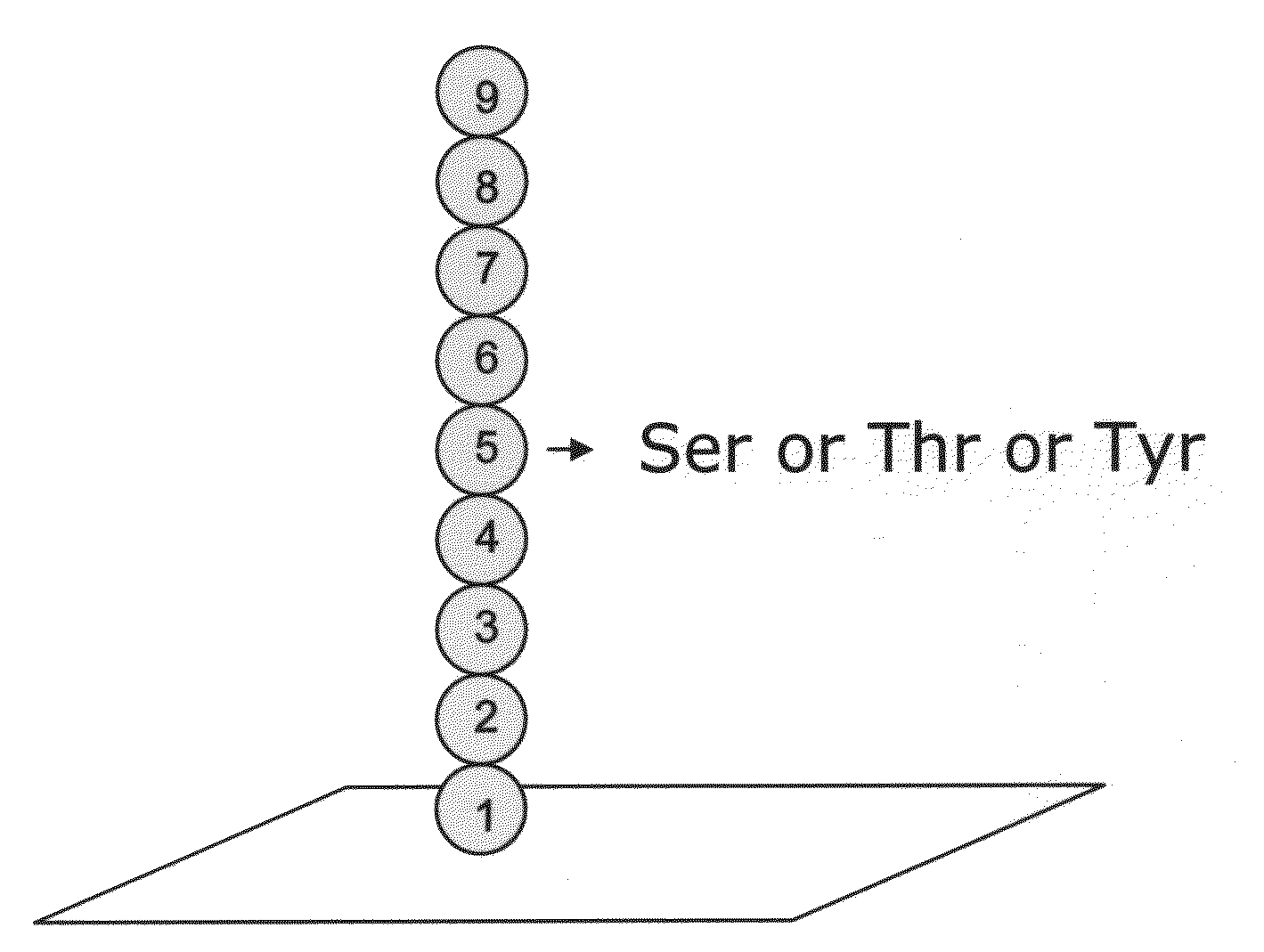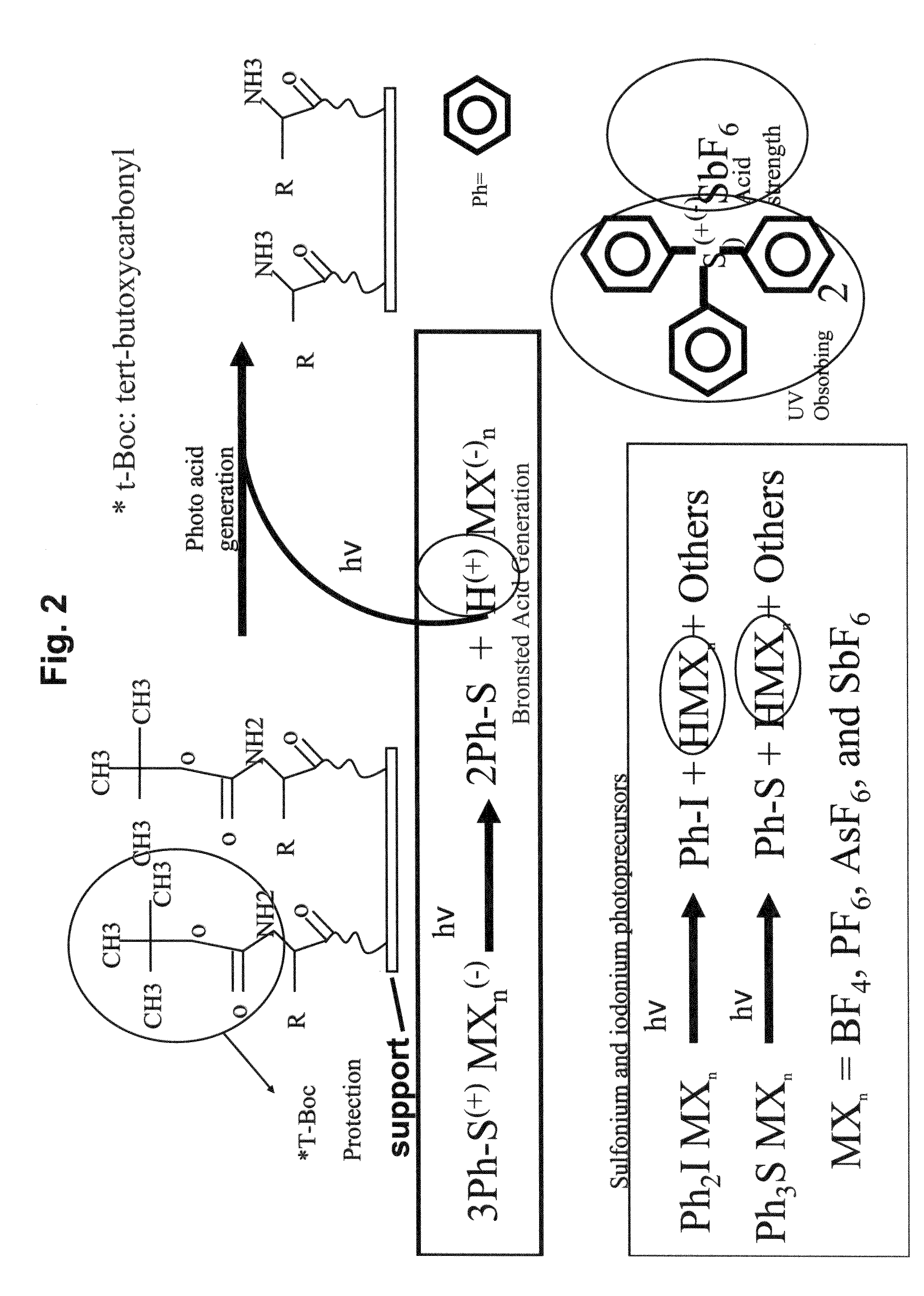High density peptide arrays containing kinase or phosphatase substrates
a phosphatase substrate and high density technology, applied in the field of high density peptide arrays containing kinase or phosphatase substrates, can solve the problems of low density and relatively low fidelity of spotted arrays
- Summary
- Abstract
- Description
- Claims
- Application Information
AI Technical Summary
Benefits of technology
Problems solved by technology
Method used
Image
Examples
example 1
Antibody Binding Testing of Peptide Array
[0184]An array with 400 peptides is generated using photoresist-RAC technology wherein each peptide is approximately 9 amino acids long. The peptides are designed to mimic epitopes to antibodies or mutants of the corresponding epitopes, the mutants being unable to bind the antibodies. Binding assays, detection sensitivity, CV, and linear dynamic range are determined with the peptide arrays using standard techniques known in the art. Results are compared to ELISA and are equivalent in sensitivity and accuracy.
example 2
Detection of Autoantibodies in Prostate Cancer
[0185]Peptides based on the sequences of Table 2 are synthesized on an array using photoresist-RAC technology. Serum from a control group and a group with prostate cancer are taken and screened with the peptide array. Percentage of peptides bound is determined between the control group and cancer group. Results are compared to results from peptide phage display as described in Wang et al. N. Engl. J. Med. (2005) 1224-1235 and determined to be equivalent.
example 3
Peptide Array and Kinase Assay for Abl and Src Kinases
[0186]Peptide sequences as depicted in FIG. 16 were produced on a support in the pattern shown, using methods as described in Examples 1 and 2. The wild-type (WT) peptides substrates are recognized by their respective kinase. A mixture of Src and Abl kinase was applied to the peptide arrays comprising sequences 1-6. The EC50 for Src was shown to be ˜1.5 ng / μl (FIG. 15), the dynamic range approximately 0.1˜10 ng / μl, and a mixture of Src with Abl kinase did not interfere with the kinase activity of either of the individual kinases, as shown in FIG. 13B.
[0187]Application of the kinase mixture (see Tables 3 and 4 for reaction mixtures) demonstrated the kinase specifically phosphorylated their respective WT peptide substrate (FIG. 15). The signal to noise ratio (SNR) of the peptide arrays with Abl / Src kinase mixture was calculated (FIG. 17A).
TABLE 3SRC Kinase Reaction Mixture[stock][final]DF(ul)Kinase reaction buffer4X1X450ATP10 mM200...
PUM
| Property | Measurement | Unit |
|---|---|---|
| Fraction | aaaaa | aaaaa |
| Fraction | aaaaa | aaaaa |
| Fraction | aaaaa | aaaaa |
Abstract
Description
Claims
Application Information
 Login to View More
Login to View More - R&D
- Intellectual Property
- Life Sciences
- Materials
- Tech Scout
- Unparalleled Data Quality
- Higher Quality Content
- 60% Fewer Hallucinations
Browse by: Latest US Patents, China's latest patents, Technical Efficacy Thesaurus, Application Domain, Technology Topic, Popular Technical Reports.
© 2025 PatSnap. All rights reserved.Legal|Privacy policy|Modern Slavery Act Transparency Statement|Sitemap|About US| Contact US: help@patsnap.com



